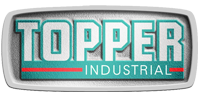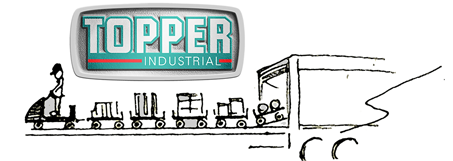Off-the-shelf kitting solutions must support line-side and off-site kitting architectures. Topper Tube can be designed to create and integrate into any type of kitting solution and manufacturing process. Modular, reconfigurable kitting solutions may include picking sensors or indicators ensuring error proofing. Because tube & joint solutions can be changed or added in minutes without programming the process means eliminating downtime and improving throughput and productivity.
Modular tube & joint solutions have a favorable impact on cycle times. Manufacturing cycle time refers to the time required or spent to convert raw materials into finished goods. It is also known as throughput time. Technically, it is the length of time from the start of production to the delivery of the final products.
Manufacturing throughput time is the amount of time required for a product to pass through a manufacturing process, thereby being converted from raw materials into finished goods. The concept also applies to the processing of raw materials into a component or sub-assembly. In the business management Theory of Constraints (ToC), throughput is the rate at which a system achieves its goal. This is monetary revenue and contrasts to output, which is inventory that may be sold or stored in a warehouse.
In logistics, throughput usually refers to the productivity of a machine, procedure, process, or system over a unit period, expressed in a figure-of-merit or a term meaningful in the given context, such as output per hour, cash turnover, number of orders shipped. Other elements of throughput include number of processes completed per unit time. Turnaround Time is another metric which represents the time from submission to completion of process. Another consideration is waiting time, or the amount of time spent ready to run but not running. Last, is Response Time, or the time between submission of requests and first response to the request.
Tubing modular solutions support material kitting which can be built to stock or to order. Kitting is the packaging of components to provide a complete “kit” of materials that are required for assembly or installation. Kitting is a term used in order fulfillment to refer to the assembly of individual items into ready-to-ship sets, or kits. In most cases, completed kits are placed into storage to be shipped later.
According to Valuestreamguru.com kitting typically works through a series of steps:
- The production team, often in conjunction with the manufacturing leads, define the kit of parts. These are often runner repeater parts that would currently take up substantial processing time.
- Stock will be reviewed and where shortages exist purchase orders raised.
- A method for the issuing of the kit is defined.
- In line with the requirement generated by ERP/MRP, the stores team will pick parts and load a trolley with the kit of parts and issue for use.
The benefits of kitting in an assembly/manufacturing environment reduces the time taken in processing parts and reduces downtime for the assembly line. Kitting can help reduce handling, motion time by operators, and machine downtime due to parts availability.

Information submitted by Jillian Burrow, Marketing Manager for Topper Industrial


No Comments Yet!
You can be first to comment this post!